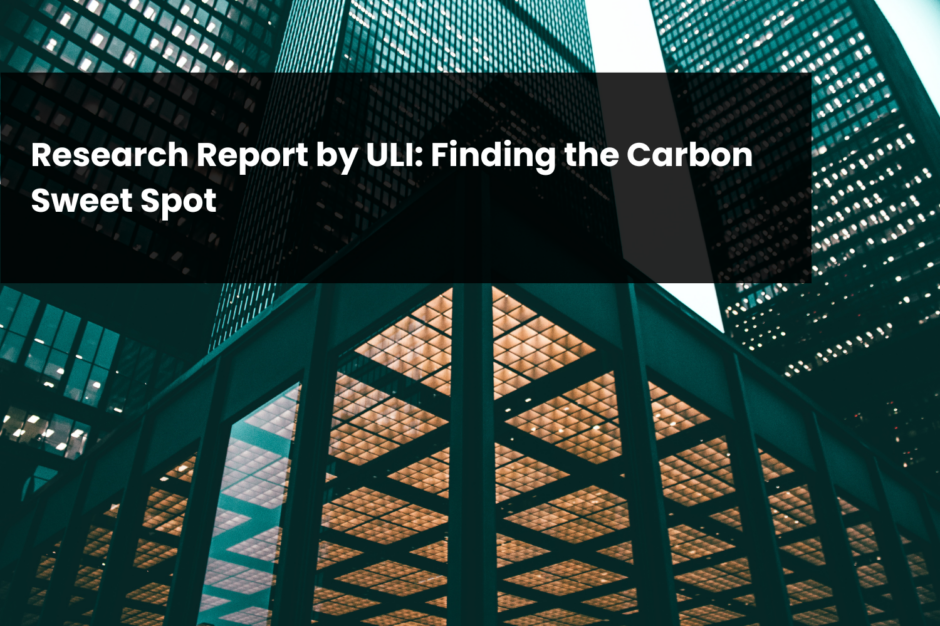Research Report by ULI: Finding the Carbon Sweet Spot
CREtech

Thanks for keeping up with the CREtech Community in the News! For more news about members of the CREtech Community, follow us on Linkedin.
With increasing emphasis on decarbonization, building owners and developers face myriad choices as they try to balance cost and value while meeting social and corporate-level carbon emissions reduction goals. Emissions in the building sector primarily fall into the categories of “operational” and “embodied” carbon emissions, which together account for nearly 40 percent of global carbon dioxide emissions.
This report by ULI presents three hypothetical analyses of buildings in different geographic and regulatory contexts: London, New York, and Singapore. These examples illustrate how real estate decision-makers can navigate the tradeoffs and opportunities that arise when pursuing reductions in both embodied and operational carbon emissions (known together as life-cycle emissions).
Key Findings:
- London: One Crown Place explores the effects of glass area and wall insulation in a mild climate with low-carbon electricity.
- New York: One Vanderbilt office tower examines the impact of aluminum frame area and glazing options in a climate with high-carbon electricity.
- Singapore: 18 Robinson investigates fixed shading elements in a cooling climate with materials sourced from afar.
The tradeoffs are particularly pronounced in decisions related to the building envelope. Building enclosure components, such as the facade, have long service lives and significant impacts on both operational carbon emissions and energy consumption. Critical design decisions impacting the building facade are highlighted, offering frameworks for considering total carbon emissions over the life of a building investment.
Key Takeaways:
- Operational vs. Embodied Carbon: Balancing energy efficiency with material usage is crucial.
- Technological Advancements: Assess the carbon tradeoffs of advanced, energy-efficient technologies.
- Material Choices: Opt for low-carbon materials and consider their lifecycle impacts.
- Renovation and Retrofitting: Reuse existing structures to reduce embodied carbon.
- Window-to-Wall Ratios: Plan glazing strategically to minimize life-cycle emissions.
Ultimately, the report suggests a process by which decision-makers can identify the whole life-cycle carbon “sweet spots” for their buildings, aiming for the most value with the least environmental impact.
Read the full report for more detailed insights and strategies to navigate the complex landscape of building decarbonization and find the carbon sweet spot for your projects.
Report released on May 21, 2024

